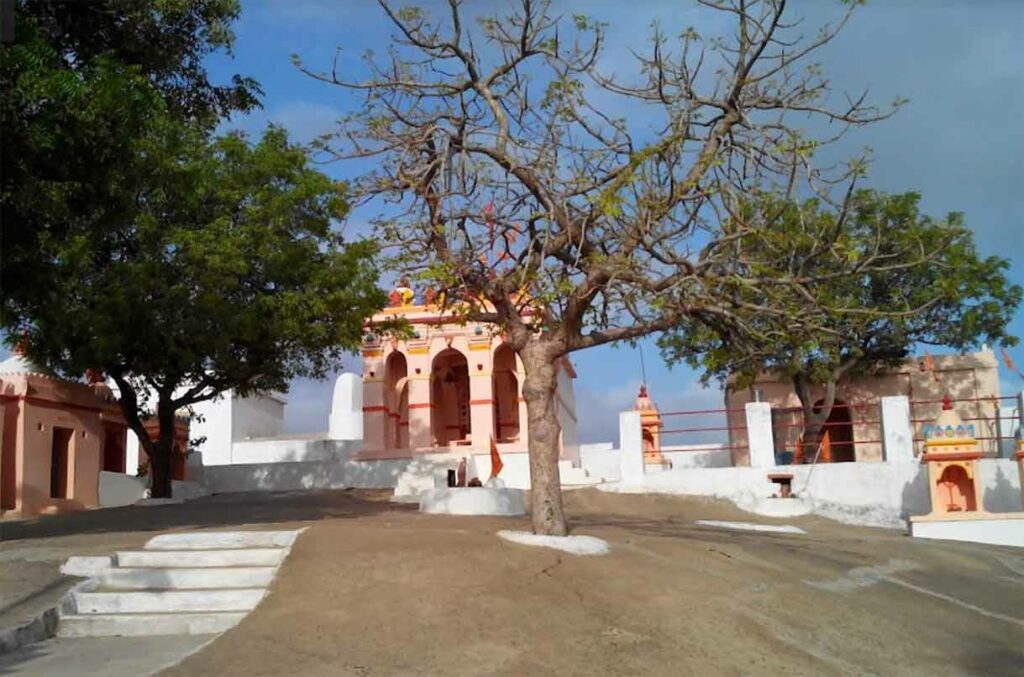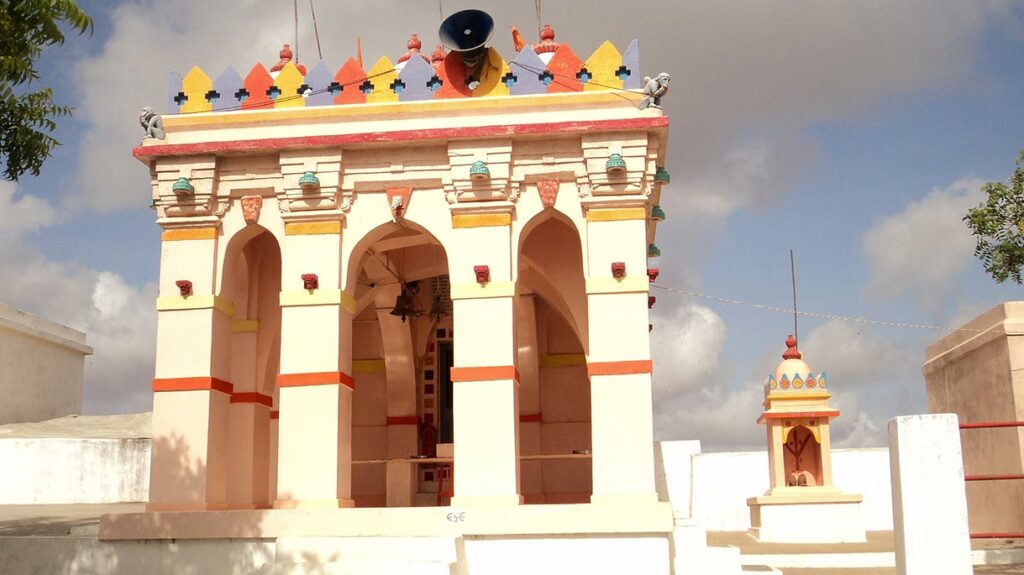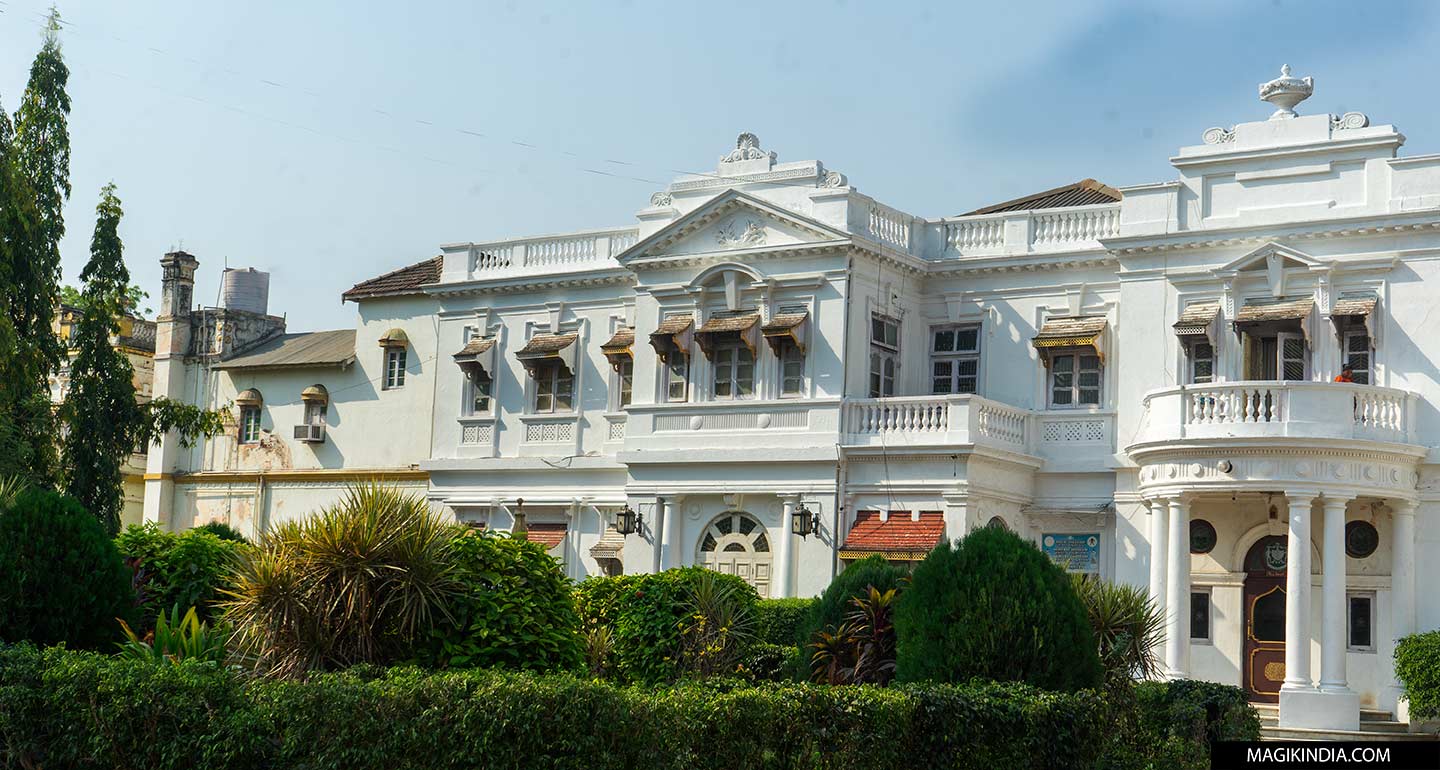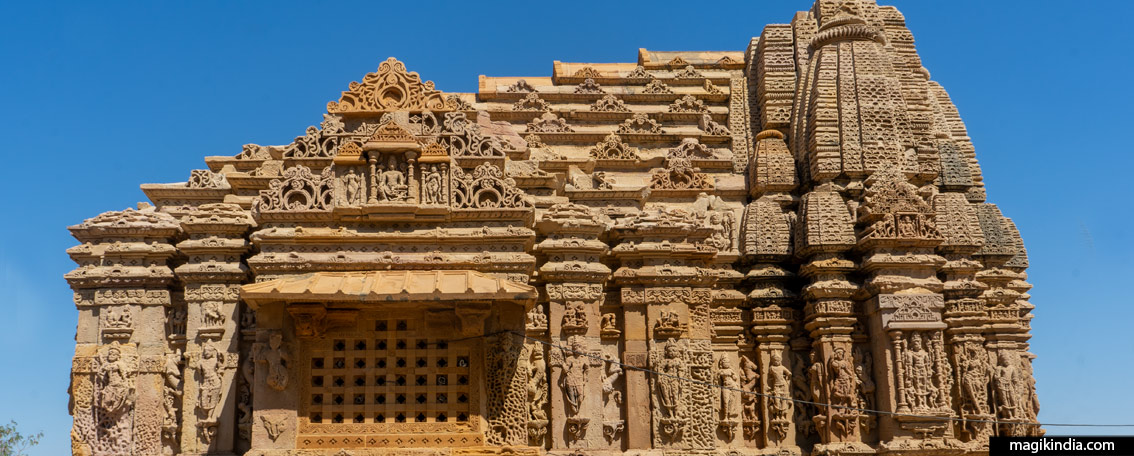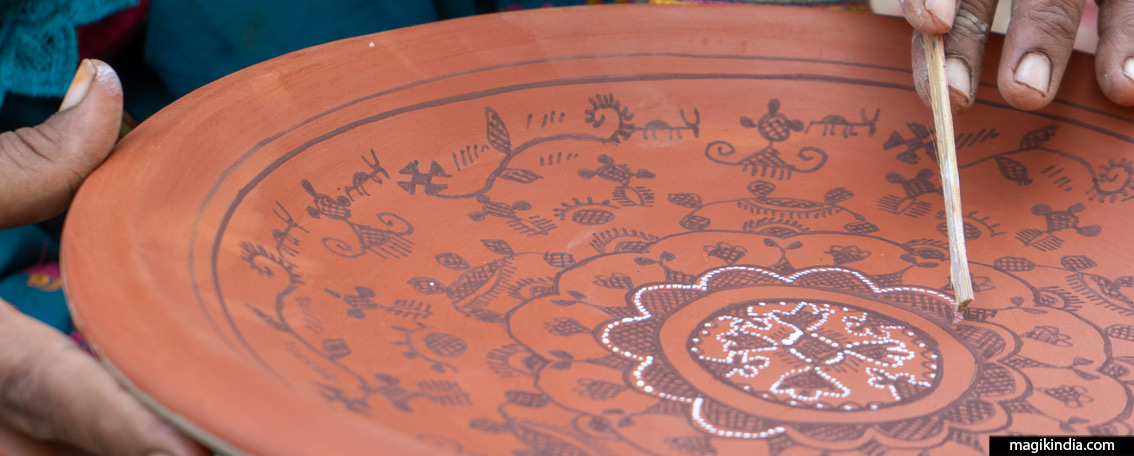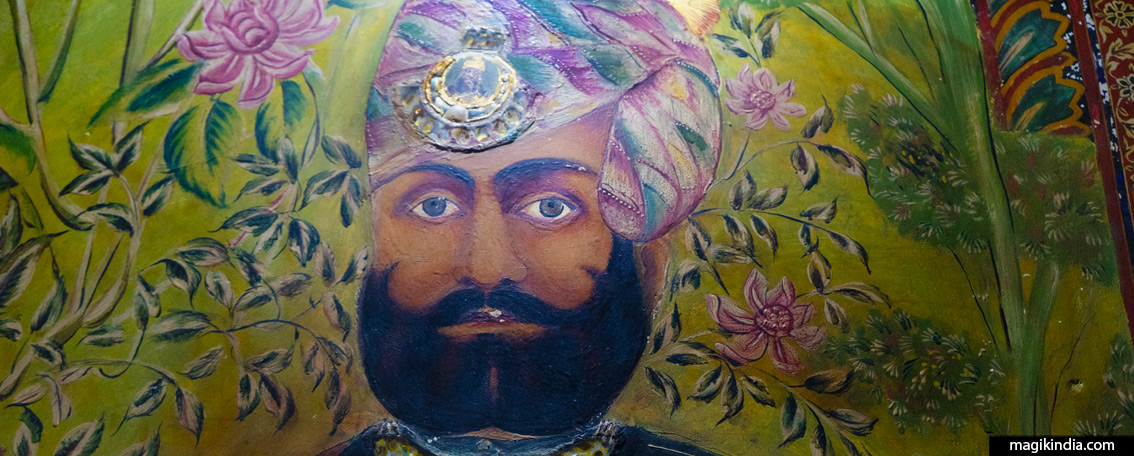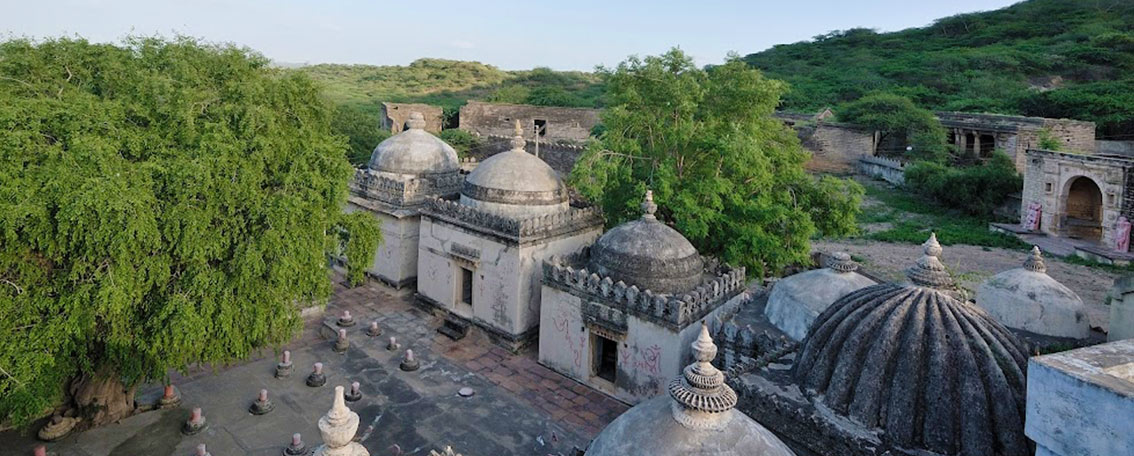
Than Jagir, the monastery of Kanphata yogis
Than Jagir, set at the foot of the volcanic hills of Dhinodhar (Kutch, Gujarat), is one of those places in India that leaves an indelible mysterious and magical impression on you. This hundred-year-old Hindu monastery is home to the order of Kanphatas, the intriguing “split-eared” tantric yogis.
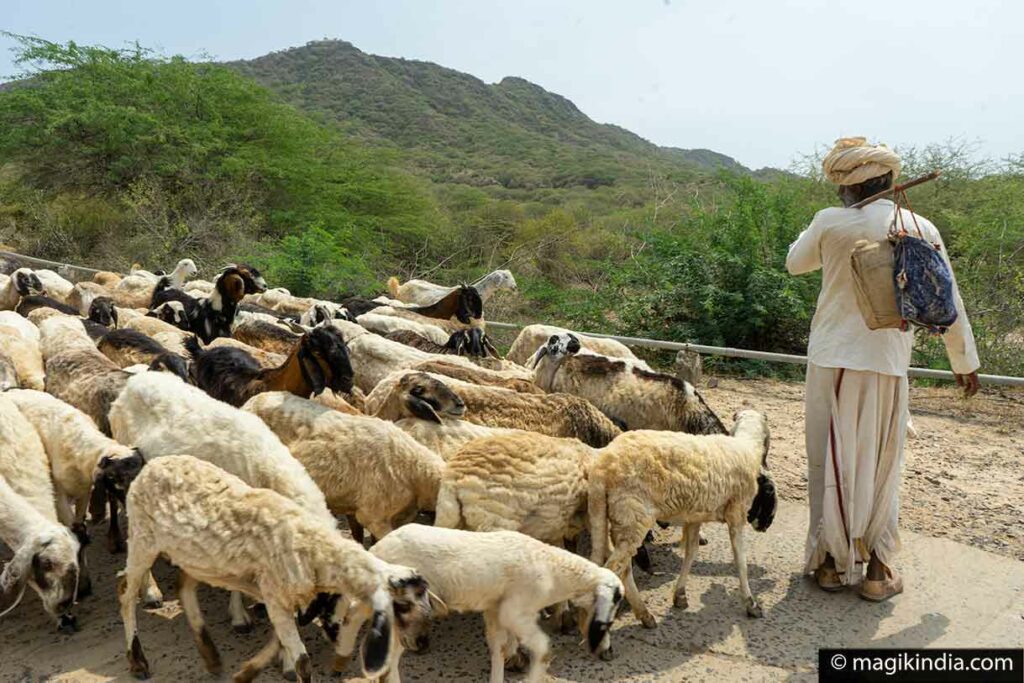
The road that leads us to the monastery of Than crosses arid landscapes where we do not meet anyone except a few Rabari shepherds walking alongside their flock. The monastery stands at the foothills of Dhinodhar, which is actually an ancient extinct volcano 390m above sea level, one hour northwest of Bhuj.
Origin of the Monastery and the Kanpatha Yogis
Than Monastery was established by Yogi Master Dhoramnath. Legend has it that the holy man stood in the posture of Sirsasana (on the head) for 12 years atop the hills of Dhinodhar, in penance for a curse he had inadvertently made. Urged by the gods to cease this asceticism, he accepted on the condition that what his eyes saw first would become sterile. This is how the Rann of Kutch, the great salt desert of Gujarat, was created.
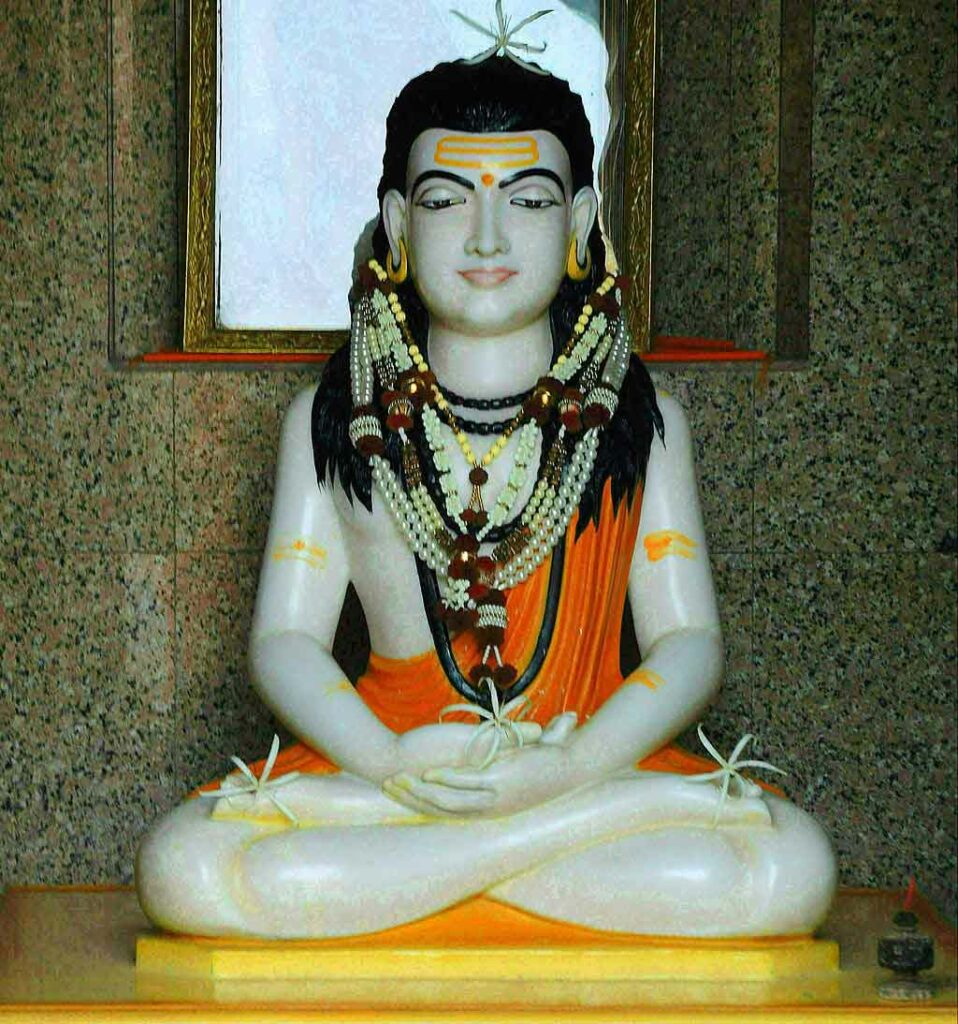
Than Jagir is home to the “Kanphata” order founded by Gorakhnath. Dhoramnath, his disciple, is said to have introduced Gorkhnath’s doctrines to Kutch at the end of the 14th century CE.
Gorakhnath, who lived between the 11th and 12th centuries CE, is one of the “Adi-Guru” (first masters) of the Nath branch. The Nath designates a very strict initiatory tradition of yogis linked to Tantric Shaivism. Nath sect is credited with the development of Hatha Yoga as well as esoteric practices that would allow them to possess special faculties*.
*While writing these few lines on the Naths and their supposed powers, I remember these Nath yogis who knocked on my door in Udaipur during the Holi festivities. In exchange for a handout, they described several aspects of my life that no one else could know about. It was the same for my husband. Mentalists or real gift of clairvoyance, it remains nevertheless a troubling anecdote.
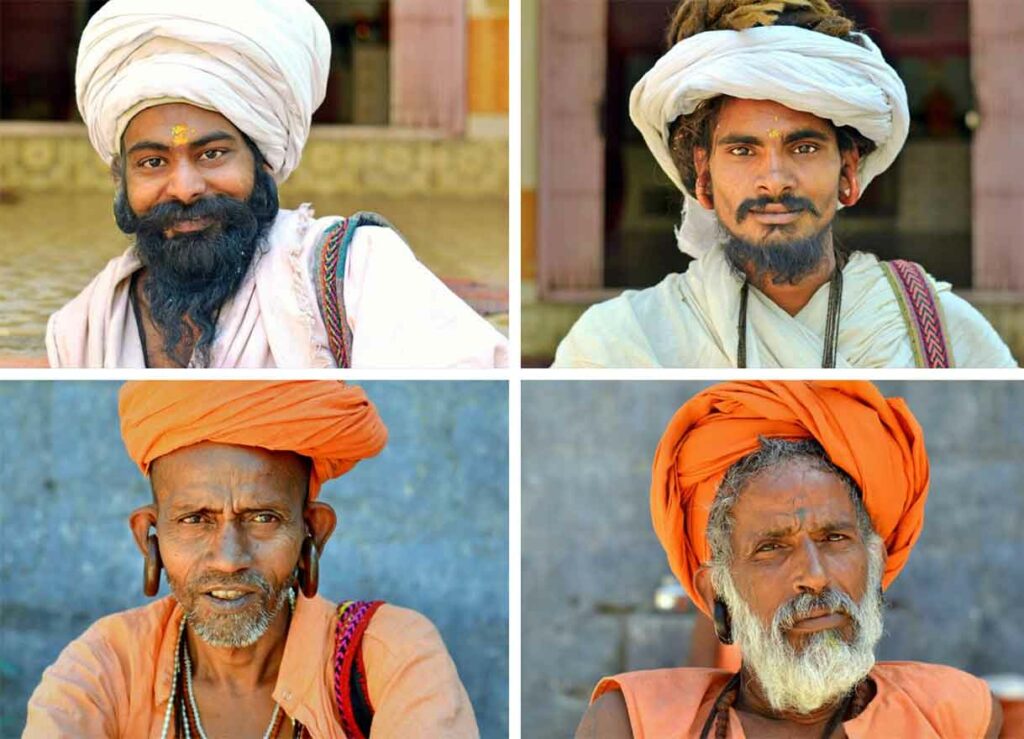
The Kanphata Yogis, who belong to one of the branches of the Nath, are distinguished by their large ear rings which distend their lobes; hence their name of “Kanphata”, which means “split ears”. They are also sometimes called “tantric yogis”, due to their secret practices.

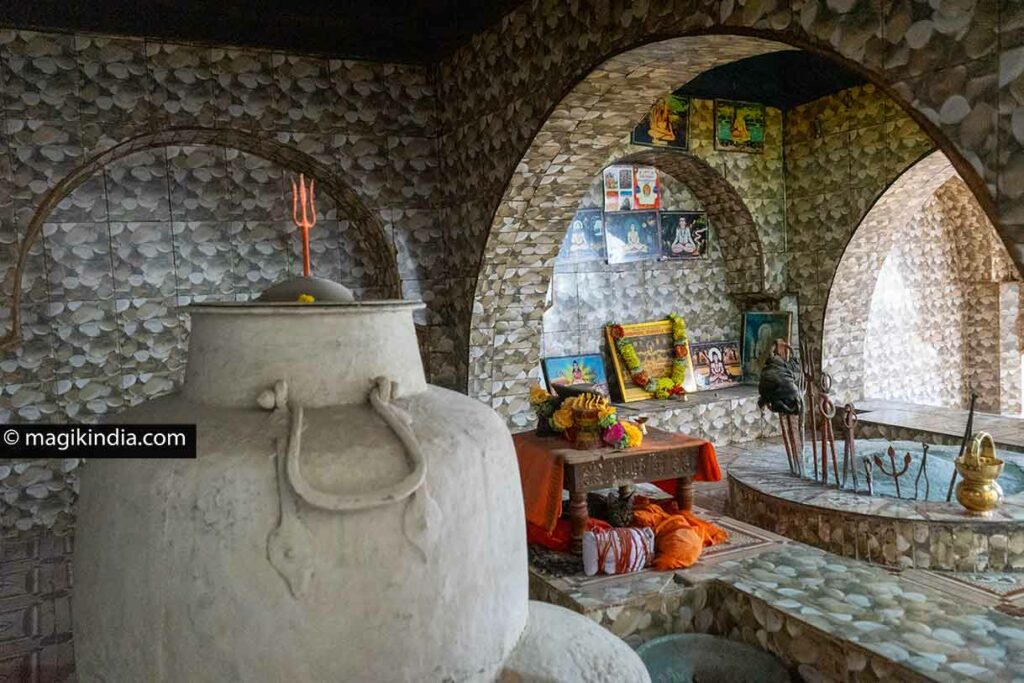
The architecture of Than Jagir
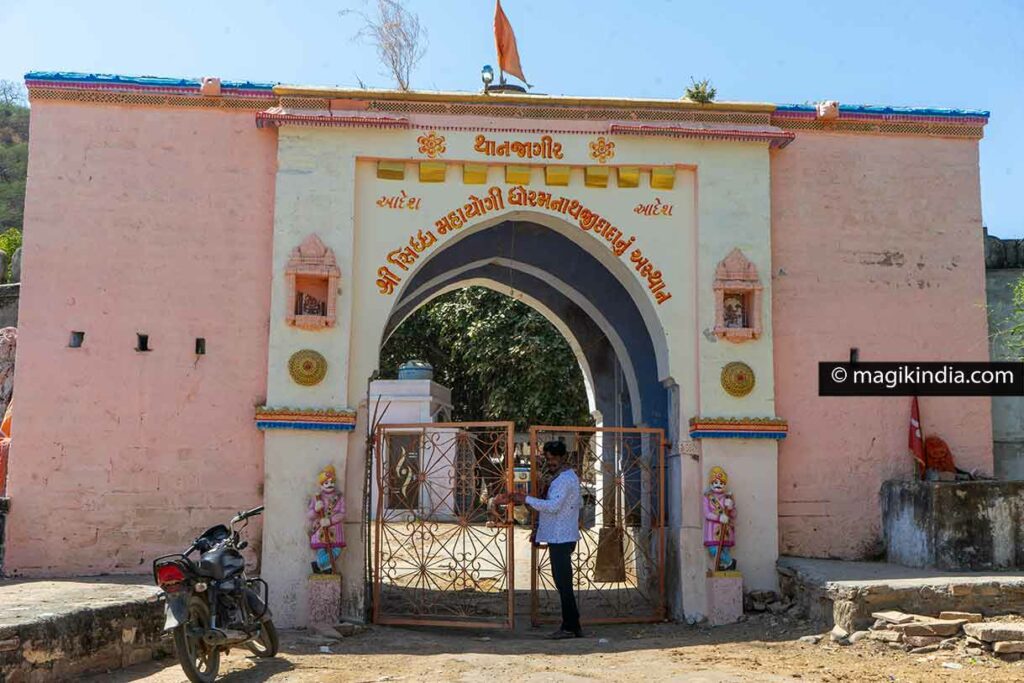
The monastery of Than is designed as a small palace-fort in the Rajput style surrounded by two walls. The main entrance itself, with its loopholes and watchtower, looks like a fortress.
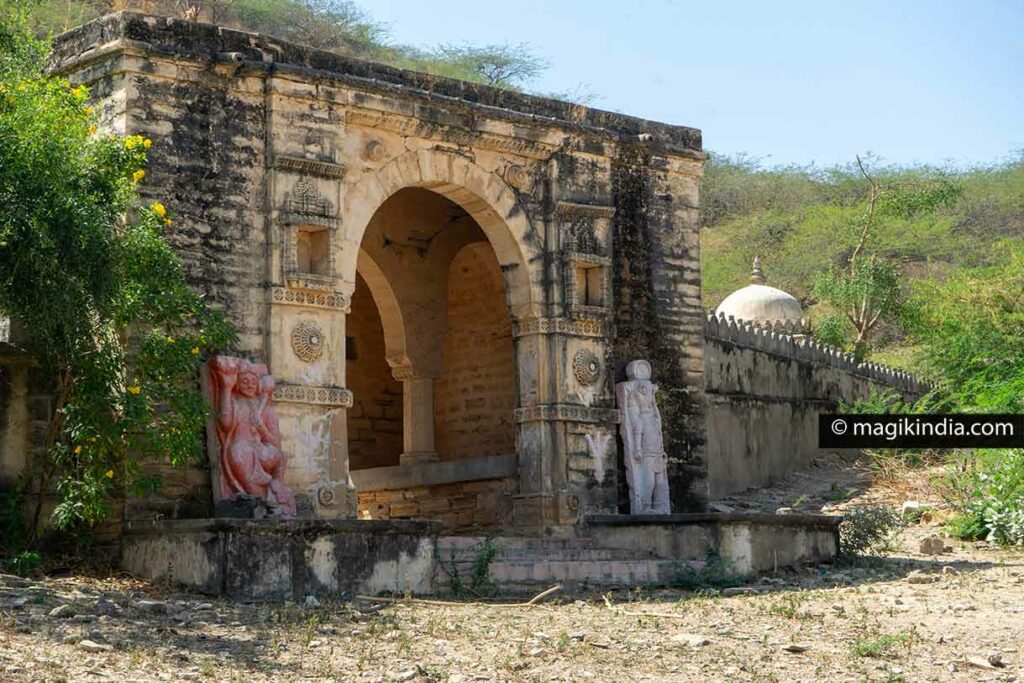
When I returned to this place in March 2023, a large part of the monastery had just been restored and repainted in (a little too) bright colours. The place which, before, had all of a ghost village suddenly became very much alive… And my post obsolete!
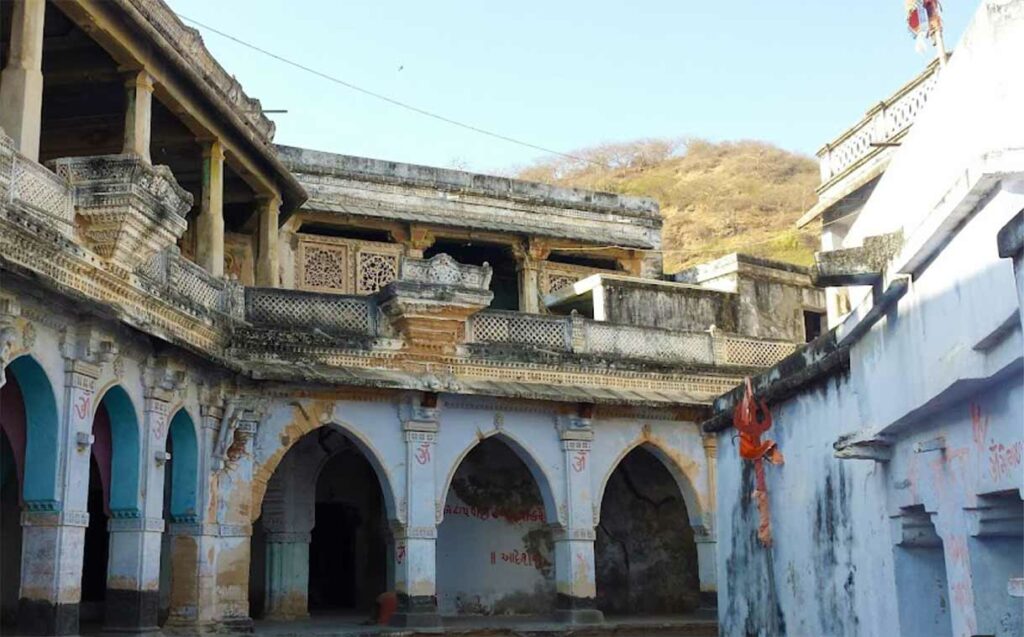

Let’s say it, the restoration was botched. The layers of “rainbow” colours mask an exceptional architecture; it is even difficult to spot the former beautiful carved jalis (stone panels) and jharokhas (corbelled balconies).

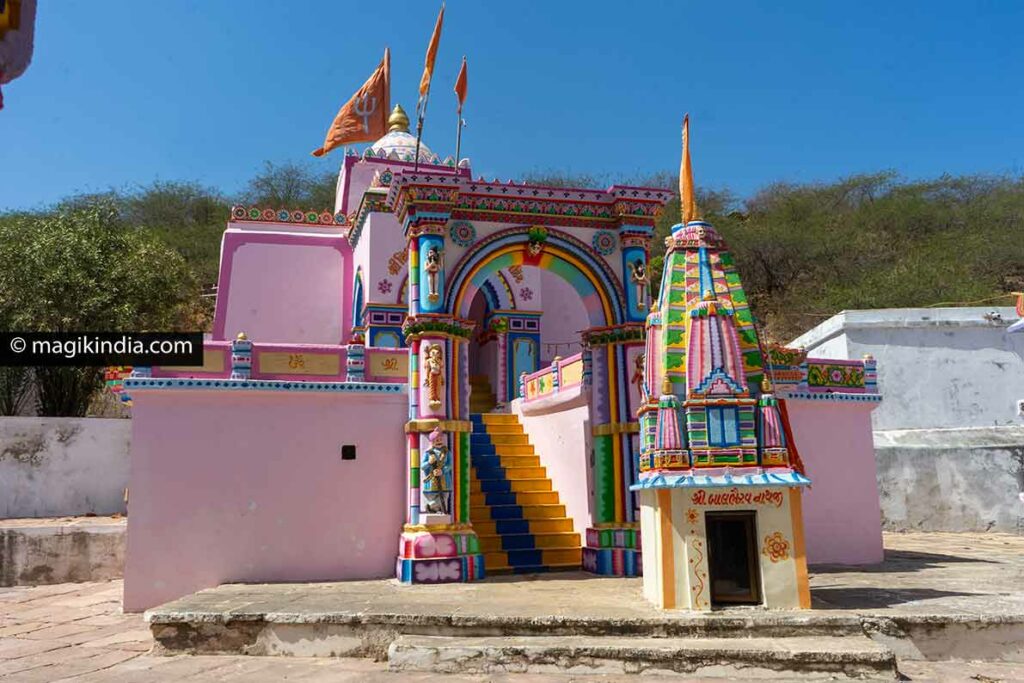
Fortunately, some buildings have escaped the colour madness of painters and they are all the more appreciated.
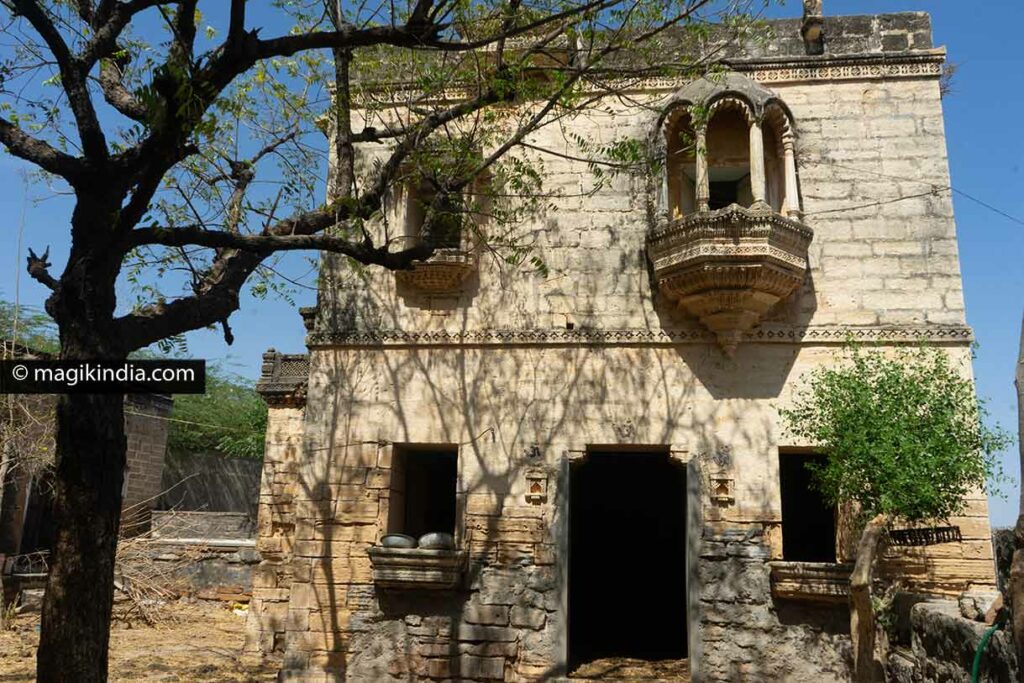
The Kamangiri murals were also spared and let us imagine how prosperous the place must have been at the height of its popularity.
Kamangiri art, now extinct, was a form of wall painting that mainly developed in the Kutch region in the 18th century. It was originally performed by Muslim artists who, trained in the Hindu tradition, were patronized by the local Hindu community of Bhatias (Rajput traders). A fine example of religious tolerance that reigned in this region at that time.
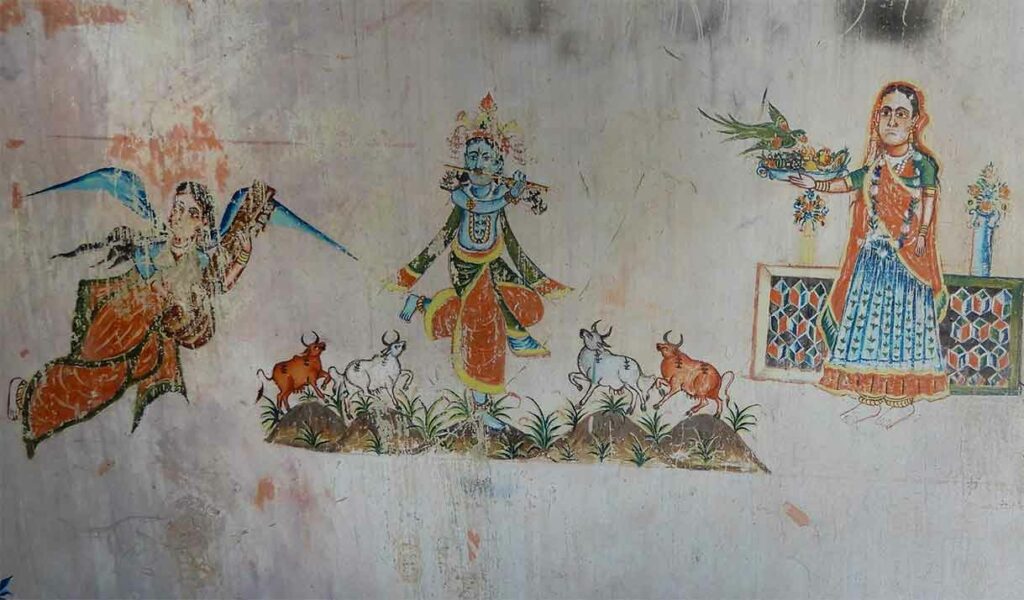
The Kamangari generally reproduced the scenes of the Ramayana and the lilacs of god Krishna. The paintings were made on a wet plaster background so that they would last longer. Artists used brushes made from palm bark and colors were extracted from minerals.
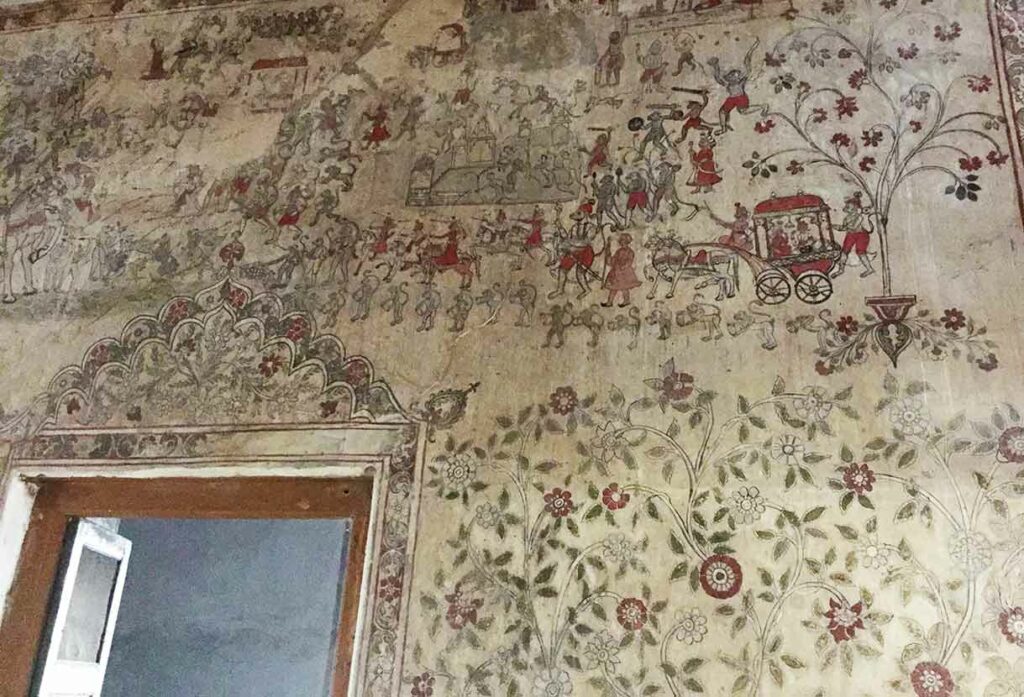
When walking near the walls of the monastery, we come across a myriad of stones placed on the ground, coated on their upper part with orange paint. At first glance we think it’s Shiva-lingams. These are actually memorials to deceased Kanphata yogis.
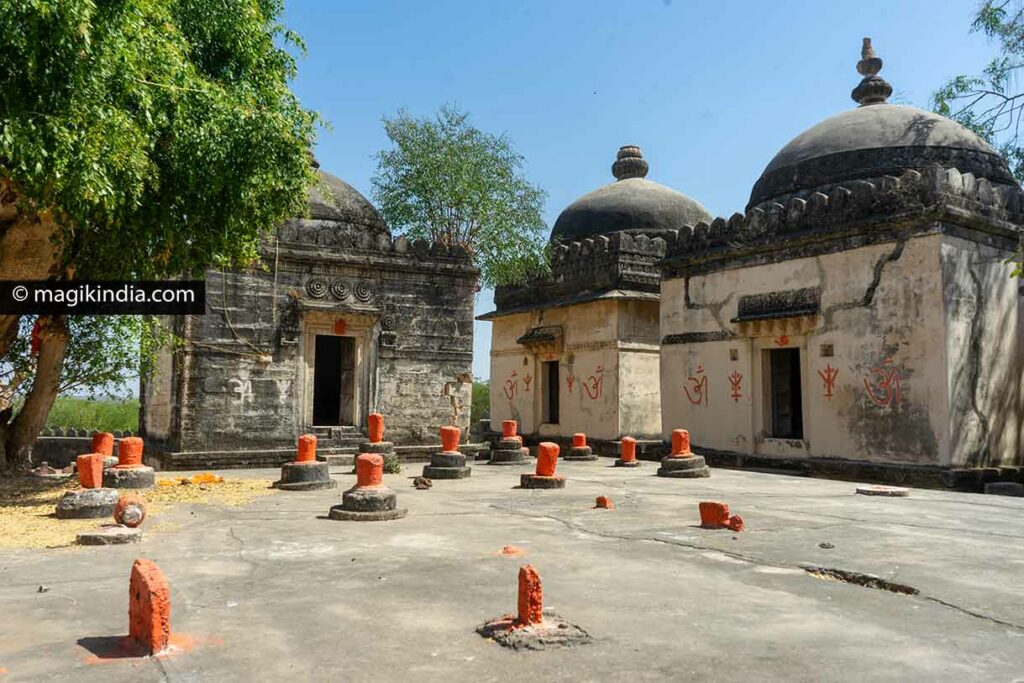
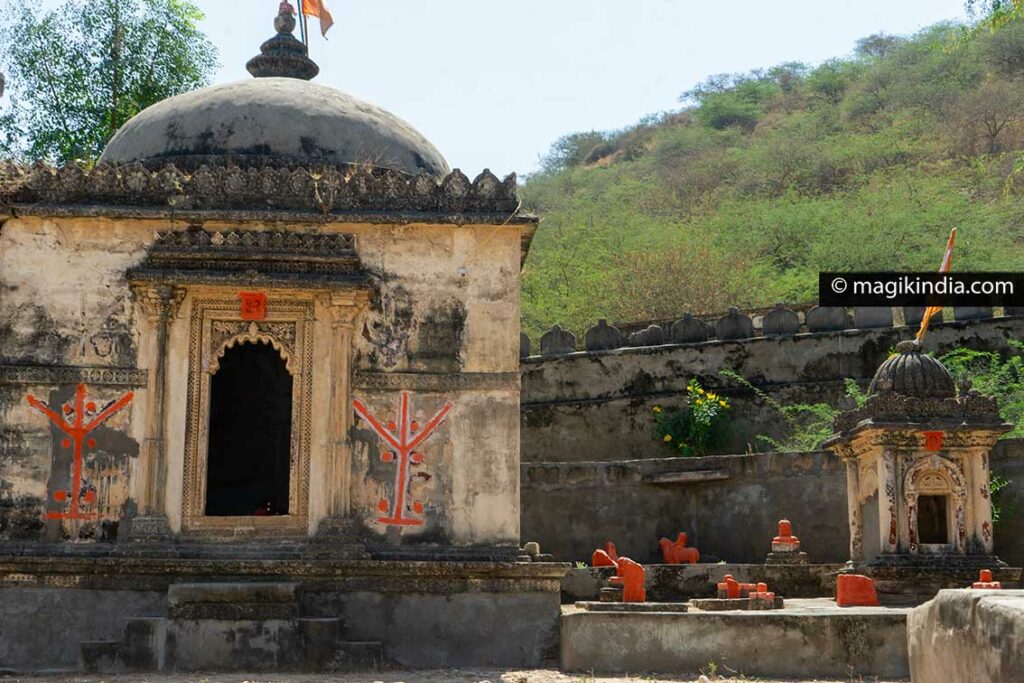
Despite the small number of yogis in Than, Kanphata practices still continue today especially during the Navaratri festival, when the head monk sits in meditation for nine days and nine nights without food or water. Another example of the power of the sadhana (spiritual practice) of these particular yogis.
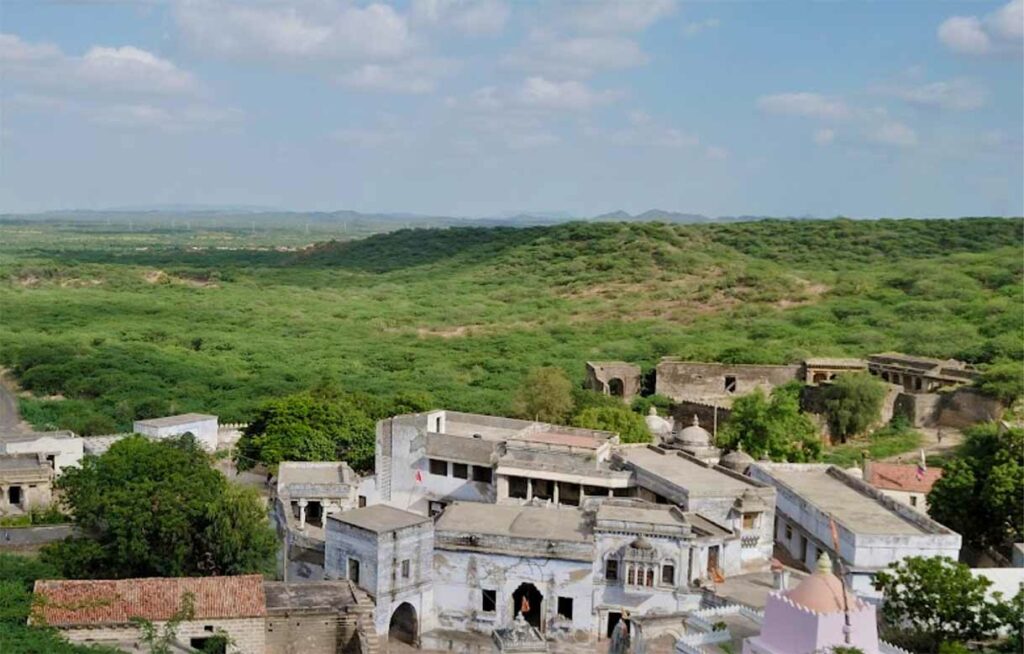
The temple of Dhoramnath
A temple in honor of the yogi master Dhoramnath is built at the top of the hills of Dhinodhar where the saint did his penance for 12 years.
You will have to climb 1000 steps round trip to reach it (on the other side of the volcano) or take a hike from the monastery of Than through a rugged path. Avoid the summer season at all costs! Prefer post-monsoon or winter.
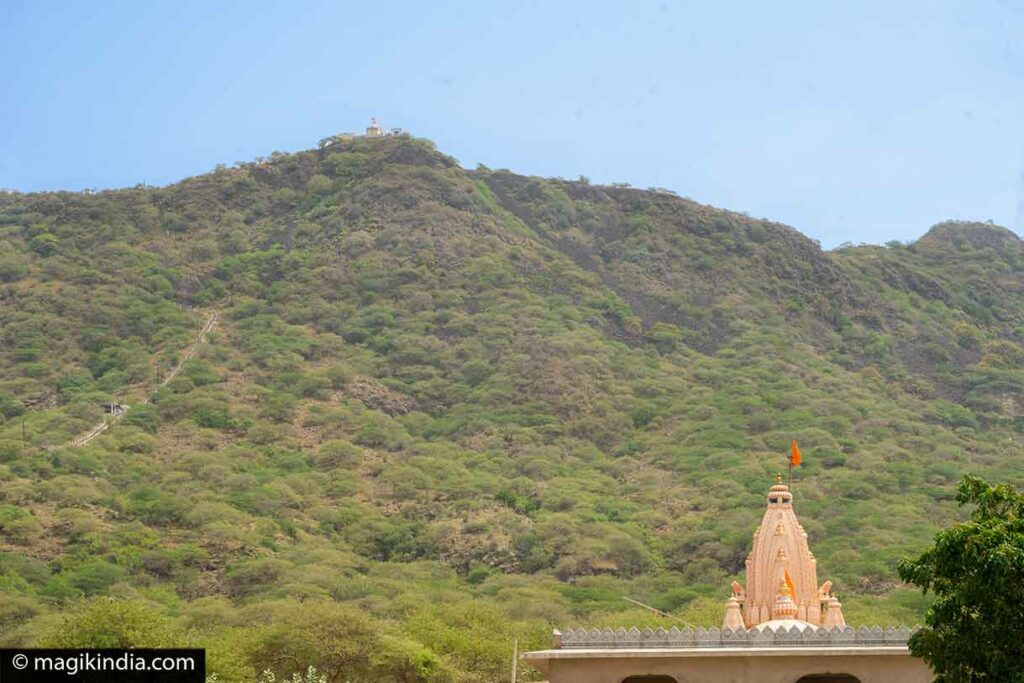
The sanctuary hosts a group of temples dedicated to Shiva and other Hindu deities, including the holy of holies: the Temple of Yogi Dhoramnath.
The whole is without comparison with the ineffable monastery of Than; but on the other hand, the panoramic view of this desert region is splendid.
